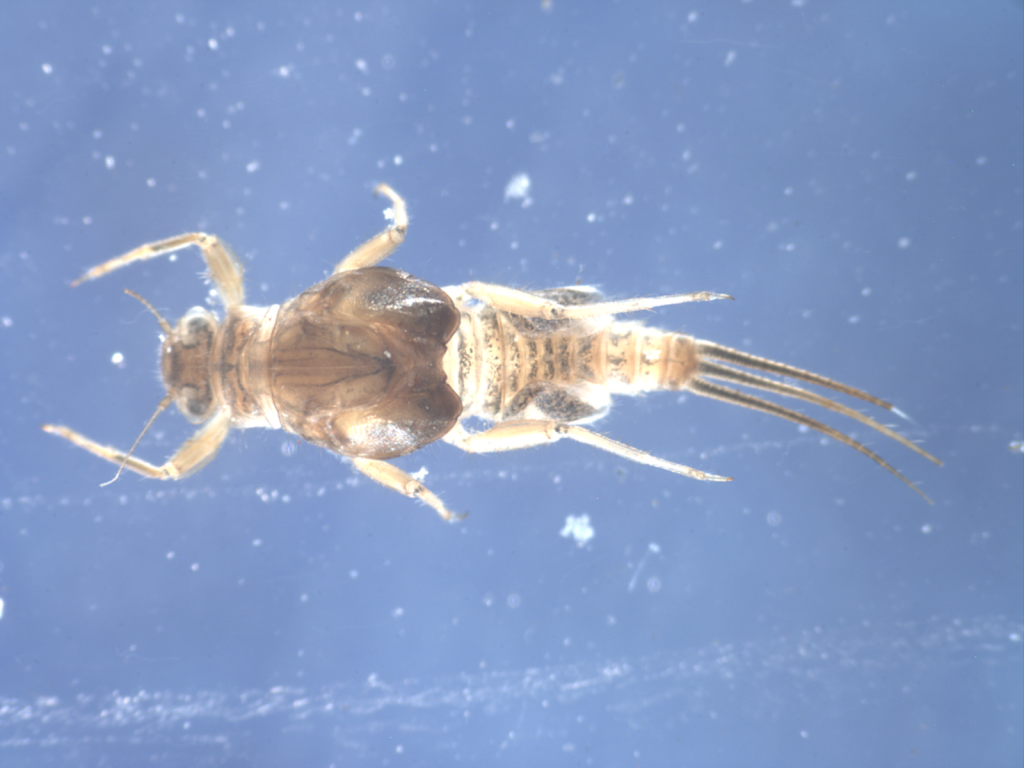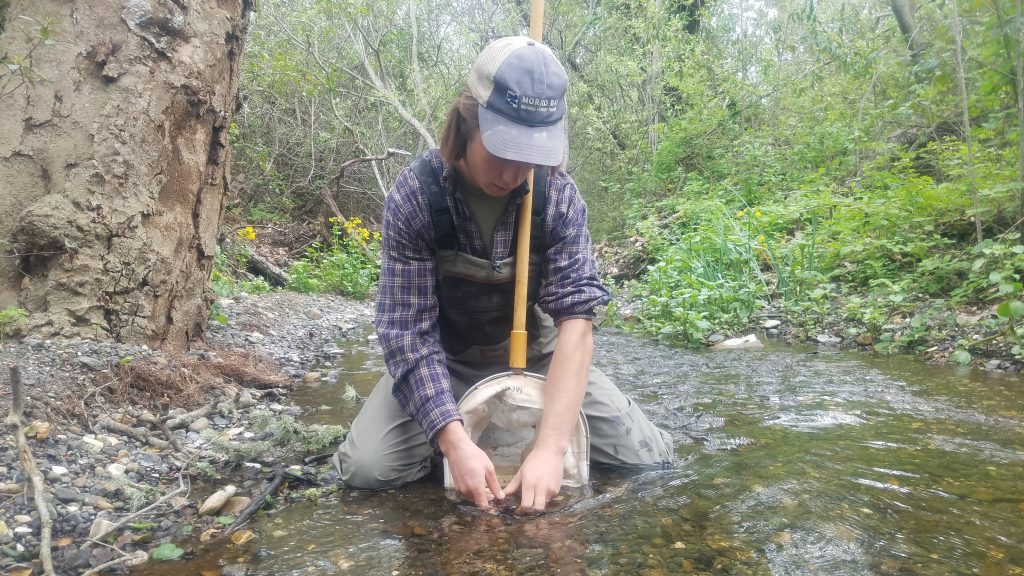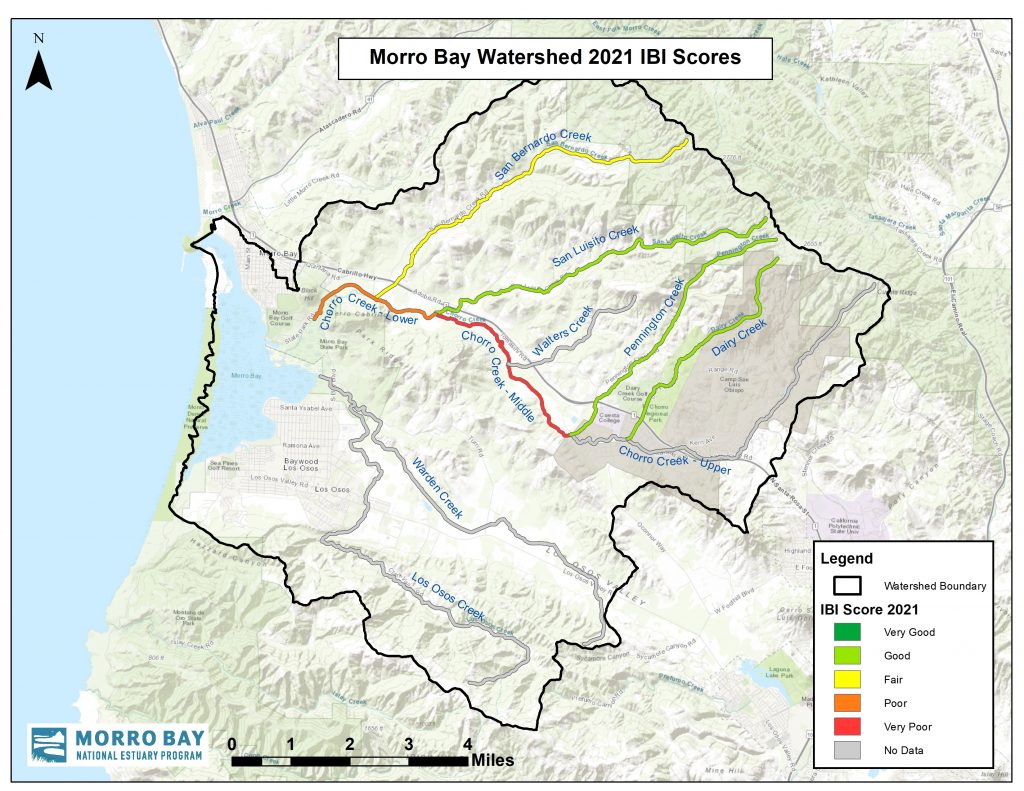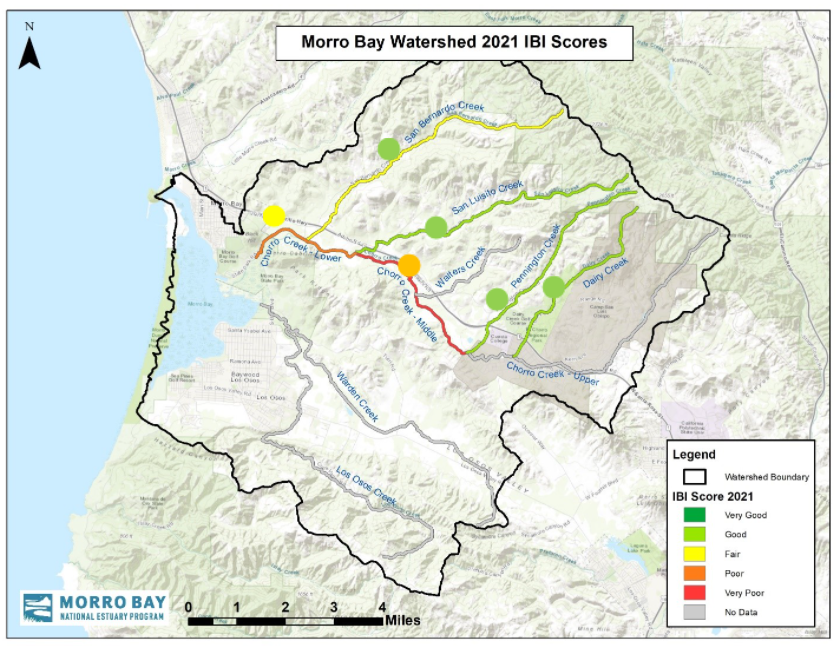Click here to watch the new bioassessment video now, or find it at the end of this post.
Annual bioassessment monitoring tells us about creek health
Each spring, the Estuary Program heads up a bioassessment monitoring effort in our local creeks. The data helps us understand the health of our creeks and how conditions are changing over time. The effort has two main components. We collect benthic macroinvertebrates, which are bottom-dwelling animals visible to the naked eye that lack a backbone. These include creatures such as stoneflies, dragonflies, and aquatic snails. We also collect habitat measurements such as whether or not trees shade the creek to keep the water cool. This information gives us a good idea of the quality of the water and the habitat, not only for macroinvertebrates but also for the fish that feed on them.
The macroinvertebrates we collect are sent to a lab for sorting, counting, and identification. And what can these creatures tell us about creek health? Some are very sensitive to pollution, so if we find those in a creek, we know that water quality was likely good. Others are very tolerant of pollution, so if that’s all we find in a creek, it’s likely that the water quality is poor.

The 2021 bioassessment monitoring effort
Spring bioassessment is typically an effort involving dozens of volunteers who contribute many hours alongside Estuary Program staff to help complete our surveys. Unfortunately, we were not able to work with volunteers in 2021 due to COVID-19 safety concerns. Surveys were conducted by three dedicated staff members. We were pleased to be able to complete our usual ten surveys for the year. For the highlights from the 2021 field work, check out this blog post.

The 2021 bioassessment results
In addition to identifying and tallying the specimens collected at a site, the lab also uses the data we gather at each site to calculate metrics that tell us about the health of the site as a whole. We use the metric called the Index of Biotic Integrity, or IBI, to compare the health of different creeks. In 2021, one site scored in the Very Good range, four sites in the Good range, two in the Fair range, one in the Poor range, and two in the Very Poor range. The colors on the map below show the creek health scores for our watershed in 2021.

The three sites on Pennington Creek had the highest scores of the year. Because of this, we established two new sites on upper Pennington Creek as potential reference sites for the watershed. We wanted to monitor a local site that is in very good condition as a comparison for our other sites. Both of the potential reference sites we monitored had high IBI scores. As usual, San Luisito and Dairy creeks also had a relatively high score. These creeks have cold, well-oxygenated water with minimal nutrient pollution.
San Bernardo Creek typically scores in the Good or Very Good range, but this year it had a score of Fair, which is common during low rainfall years.
Chorro Creek scores decreased in 2021, with lower Chorro Creek scoring in the Poor category, and the two sites on middle Chorro scoring Very Poor. In 2021, all three sites had their lowest scores ever measured, and once again drought impacts are thought to be at least partly responsible.
How the 2021 scores compare to previous bioassessment survey results
In general, the 2021 scores trended lower than historical averages. This is thought to be due to the persistent drought conditions from 2011 to 2017. We had lower than average rainfall in 2021, and a large storm this past January could have washed away macroinvertebrates.

A huge thanks to the Harold J. Miossi Charitable Trust
The Harold J. Miossi Charitable Trust is a valued partner in creating this long-running dataset. The Trust has contributed a total of $83,750 to the effort from 2013 to 2021, and this important work to track creek health would not be possible without their support.
The Miossi Trust recently awarded us funding to support bioassessment in the watershed for the next three years, and we are excited to start planning the 2022 effort.
Bioassessment: Watch the video!
The Estuary Program recently created this brief video to introduce people to the concept of bioassessment, to recognize the contribution of the Miossi Trust, and to recruit volunteers. If you’d like to join the effort in the spring, please contact us via our Volunteer Interest Form and we will reach out in the spring to notify you of training dates.
Help protect and restore the Morro Bay estuary
- Donate to the Estuary Program and support our work in the field, the lab, and beyond.
The Estuary Program is a 501(c)3 nonprofit. We depend on funding from grants and generous donors to continue our work. - Support us by purchasing estuary-themed gear from ESTERO. This locally owned and operated company donates 20% of proceeds from its Estuary clothing line and 100% of Estuary decal proceeds to the Estuary Program. Thank you, ESTERO!
- Purchase items from the the Estuary Program’s store on Zazzle. Zazzle prints and ships your items, and the Estuary Program receives 10% of the proceeds. Choose from mugs, hats, t-shirts, and even fanny packs (they’re back!) with our fun Estuary Octopus design, or our Mutts for the Bay logo.